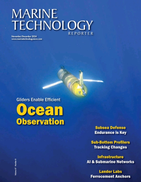As extensive exploration of shallow and deepwater oil and gas plays along Brazil’s Equatorial Margin (EM) progresses, a large and unique reef system has been discovered among offshore exploration and production blocks. In a research article recently published in Science Advances, a group of researchers from Brazil and the U.S. described the unexpected discovery they made in offshore shallow waters off the mouth of the Amazon River in northern Brazil. The international group of scientists, coordinated by Fabiano Thompson (UFRJ) and Carlos Rezende (UENF), which used research ships to study the offshore seabed, was immensely surprised when confronted by a large reef system under muddy water off the Amazon River mouth during hydrographic studies in the region. During the multi-year research project, it was established that the reef system is at least 700 miles (1,126 km) long, ranging from around 25 to 120 meters deep, and approximately 45 to around 200 km offshore. Coral formations were detected from Brazil’s border with French Guyana down to Brazil’s northeast state of Maranhão. Although there were speculations of its existence for decades, the final discovery of the extensive reef system was still unexpected, because most of the great river mouths in the world produce major gaps in reef systems, when reefs are present along the river mouths. Reefs usually thrive in clear, sunlit saltwater, but the waters near the mouth of the Amazon River are very muddy, with huge quantities of sediments and nutrients washed downriver, no light and swept far out to sea. “Primary production to sustain the new biome benthic organisms appears to rely on chemosynthesis (i.e. microbes use minerals as energy sources) to make biomass and exudates instead of photosynthesis (i.e. microbes use light as energy source),” said Fabiano Thompson.
Astonishingly, this reef system is growing below the freshwater “plume”, or outflow, of the Amazon River. Compared to many other reefs, it is relatively poor in fauna and flora diversity and quantity, nevertheless, the researchers found more than 60 species of sponges, 73 species of fish, spiny lobsters, sea stars and many other forms of reef life. The Amazon River has the world’s greatest discharge basin, with an area over 7 million square kilometers and discharges about 209 thousand cubic meters of water per second (approximately 20% of all the freshwater discharge into the world’s oceans), and accounts for roughly one-fifth of the world’s total river flow. It is significant to note that the Amazon River is considered by many scientists to be the greatest river in the world. The reef systems encountered are also influenced by the fast flowing North Brazil Current (NBC), which runs east to west, toward French Guyana, and may have helped the reefs to grow.
This multidisciplinary research of the outer Amazon shelf took place between 2010 and 2014, comprising three voyages aboard different research vessels, and it discovered a unique carbonate reef system with a total area of around 9,500 square kilometers. Sampling was carried out onboard R/V Knorr (May 2010), R/V Atlantis (July 2012), both owned by the U.S Navy and operated by the Woods Hole Oceanographic Institution (WHOI) and the NHo Cruzeiro do Sul or H38, owned and operated by the Brazilian Navy (September 2014). The data was collected by a group of more than 30 researchers. The bottom topography data was obtained by a variety of means. 800 km of acoustic data was obtained using a Kongsberg EM122 Multibeam Echosounder in 2012. In 2014, 500 km was surveyed using two EdgeTech side scan sonars, model 4200 (100 to 400 kHz) and model 4100 (100 to 500 kHz). Both surveys were carried out with around 300 meter swath widths. Sonograms were processed with Sonar WizMap 5.03, converted into 1-m pixel images, and further vectored and submitted to supervised qualitative classification in a Geographic Information Systems (GIS) environment. Classification was based on backscatter intensity and indirect topography. The analysis of all the data took over a year to be completed and showed that the newly discovered reefs are in imminent danger, as there is ongoing oil exploration all along the reef and in 20 cases, oil production is being carried out right over parts of the reef system. The conclusions reached by the researchers are reported here in full. “In conclusion, the novel reef system off the Amazon River is extensive, is impoverished in terms of biodiversity, and presents unique functional attributes due to the plume influence. The system provides relevant ecosystem services and functions as a selective biogeographic corridor between the Caribbean and the South Atlantic Ocean, and may give important insights in terms of future scenarios for forecasting coralline reefs trajectories under acute climate changes. Remarkably, 125 exploratory blocks for oil drilling in the Amazon shelf were offered in an international auction in 2013, 35 of which were acquired by domestic and transnational companies. In the past decade, a total of 80 exploratory blocks have been acquired for oil drilling in the study region, 20 of which are already producing. These blocks will soon be producing oil in close proximity to the reefs, but the environmental baseline compiled by the companies and the Brazilian government is still incipient and largely based on sparse museum specimens. Such large-scale industrial activities present a major environmental challenge, and companies should catalyze a more complete social-ecological assessment of the system before impacts become extensive and conflicts among the stakeholders escalate. The feasibility of oil and gas operations may be assessed by considering environmental and social sensibilities, but even the extent of the overlap of exploratory blocks with sensitive areas remains unclear. The context of great proximity to international waters and to the French Guyana border adds complexity. It is relevant to consider further studies on regional marine spatial planning, the functioning of the new reef biome in face of global changes, and sensitivities related to the hydrologic cycle of the Amazon—where extreme droughts and floods are on the increase and will influence the functioning of this novel carbonate reef system.”
Unfortunately, Brazilian institutions have neglected to examine more thoroughly the seabed and underwater environment along the deeper shallow waters off the Amazon River basin and the EM. Knowing this lack of hard data on the EM, the ANP, Brazil’s National Petroleum and Biofuels Agency, states in its 11th round auction documents that environmental impact licenses for blocks in the EM may be impacted and even revoked depending on new data being acquired, which, with the unique reef discoveries along the Foz do Amazonas, Para-Maranhão and Barreirinha basins, may very well affect a number of operators with ongoing E&P projects at the EM. Funding for the research was secured through: Conselho Nacional de Desenvolvimento Científico e Tecnológico (CNPq), Coordenadoria de Aperfeiçoamento de Pessoal de Nível Superior (CAPES),Fundação Carlos Chagas Filho de Amparo à Pesquisa do Estado do Rio de Janeiro (FAPERJ) Fundação de Amparo à Pesquisa do Estado de São Paulo (FAPESP), and Brasoil. MCTI and the Brazilian Navy provided support with the NHo Cruzeiro do Sul in 2014. Expeditions in 2010 (R/V Knorr) and 2012 (R/V Atlantis) were funded by U.S. NSF. Additional support was provided by the Gordon and Betty Moore Foundation.
(As published in the September 2016 edition of Marine Technology Reporter)


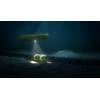
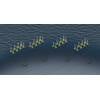
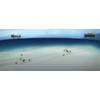

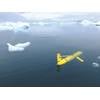




 December 2024
December 2024


